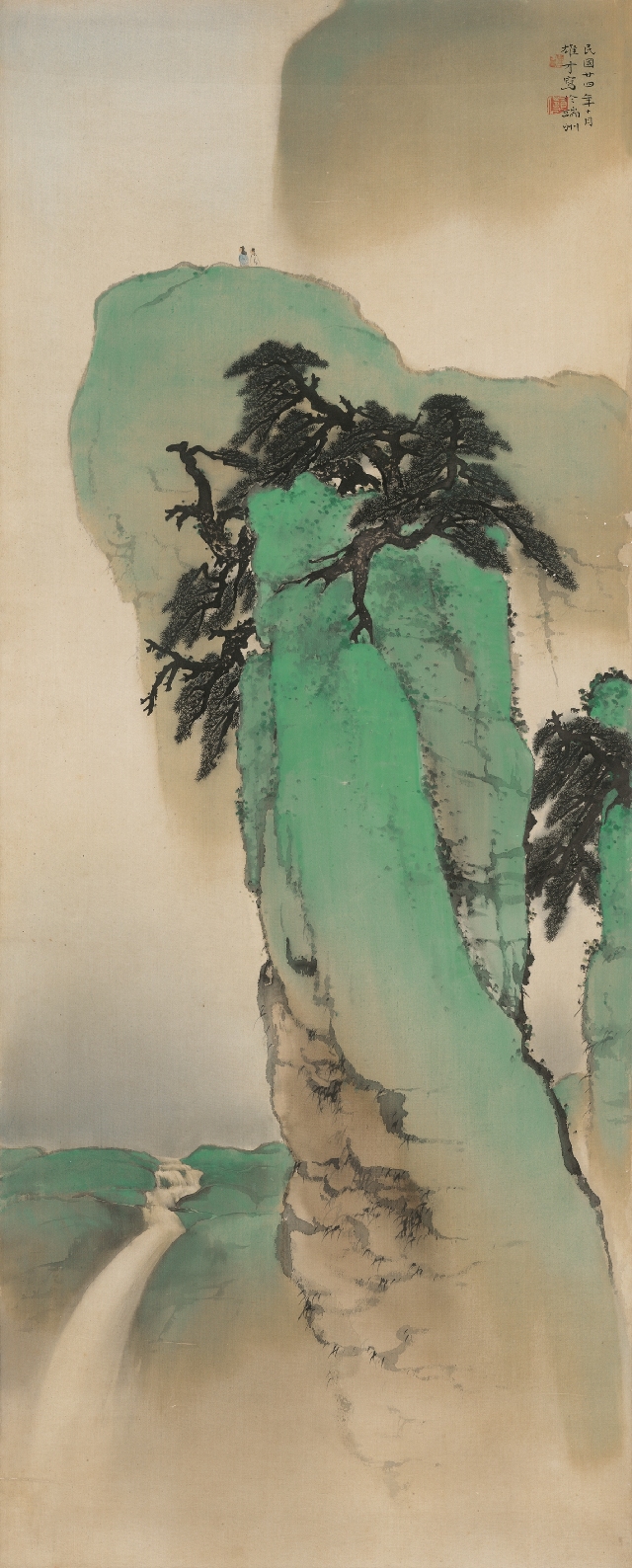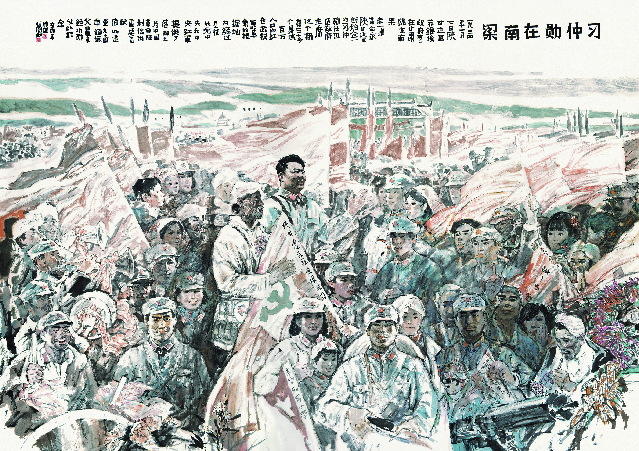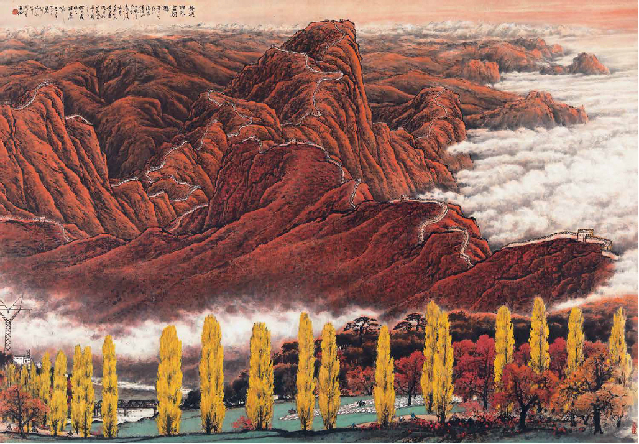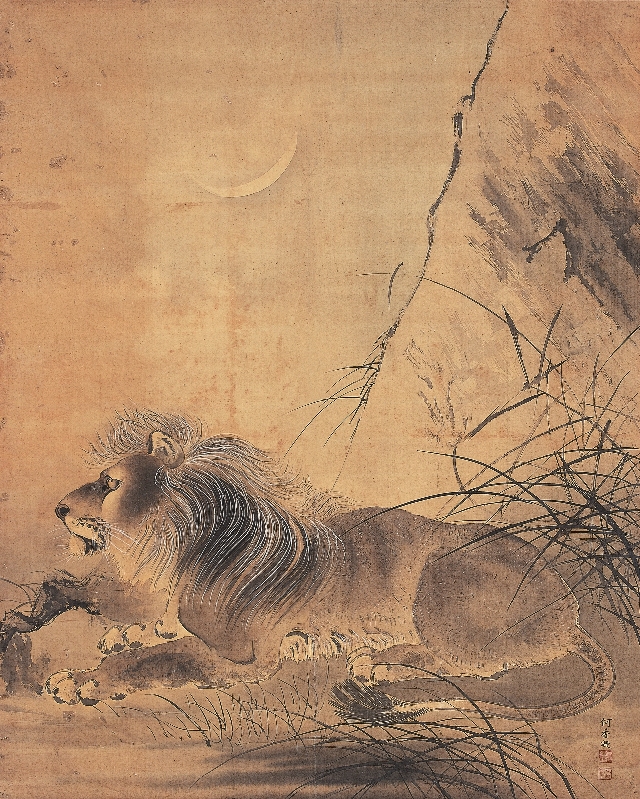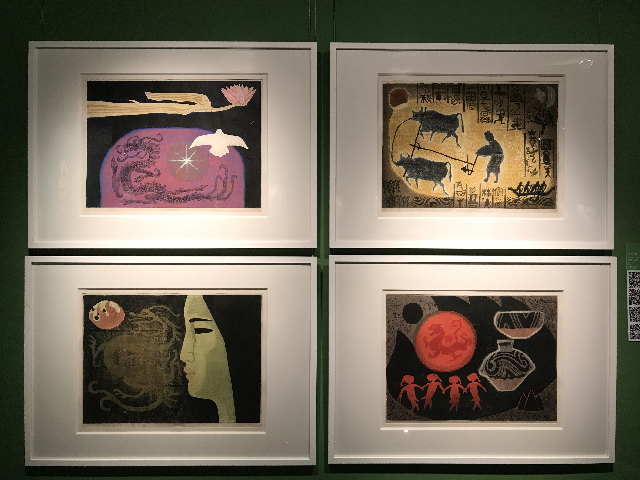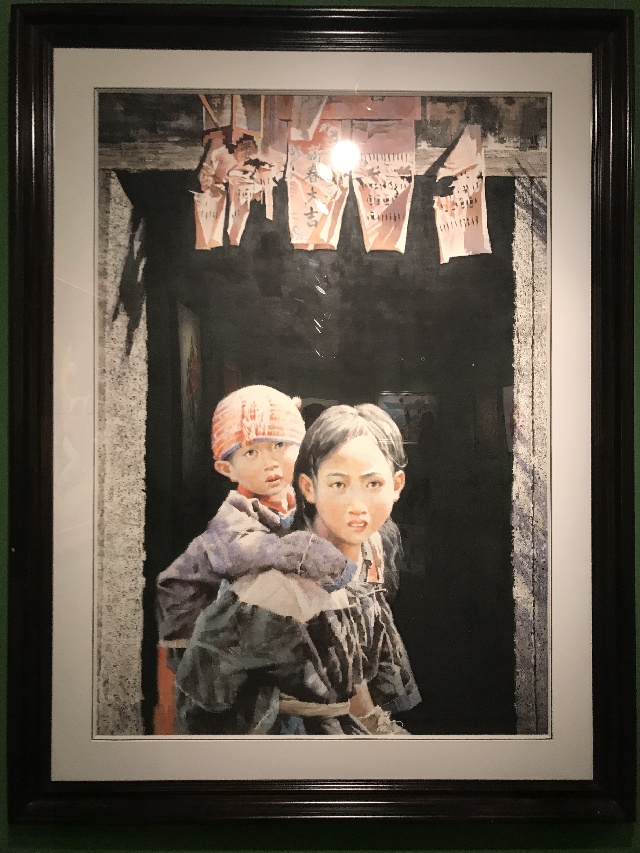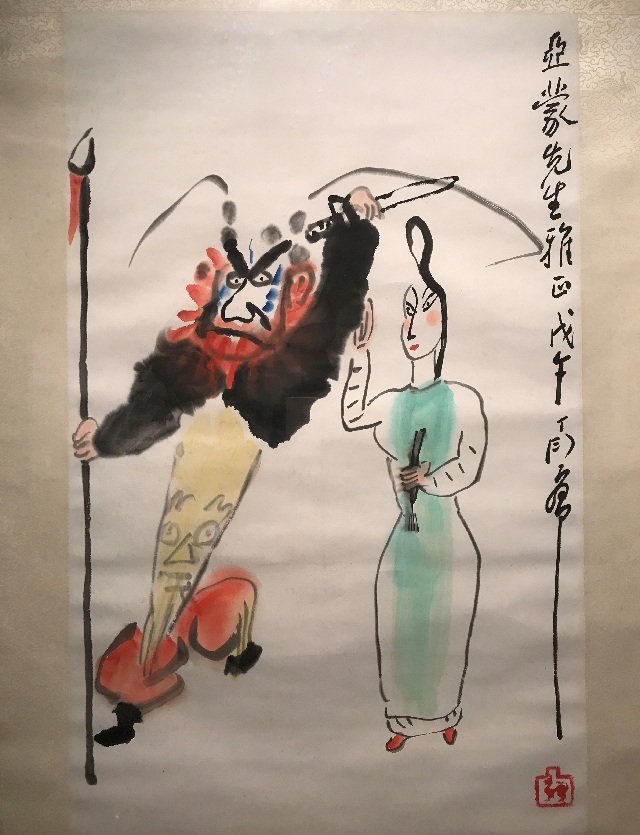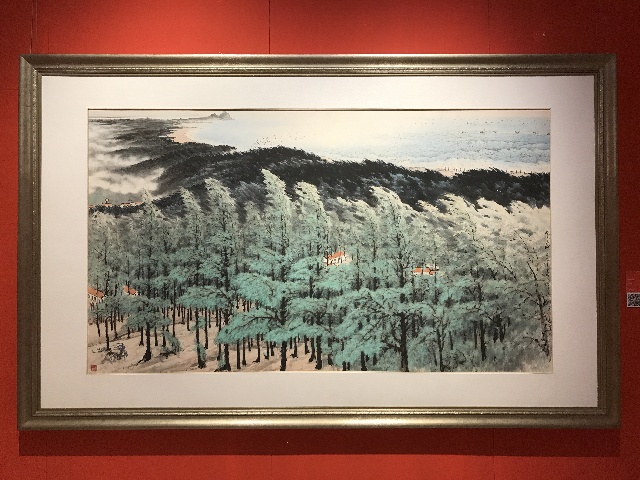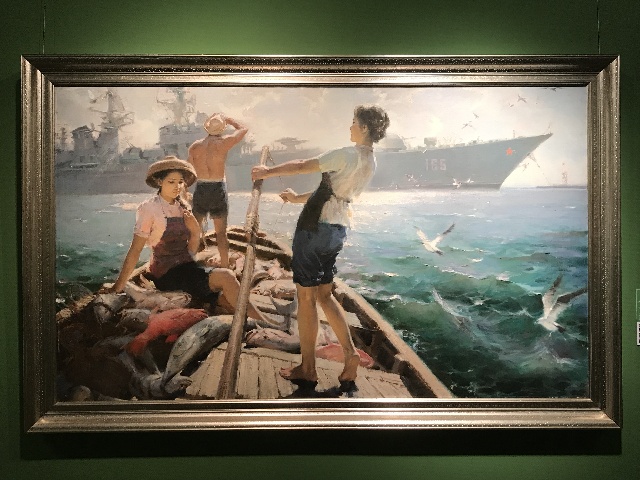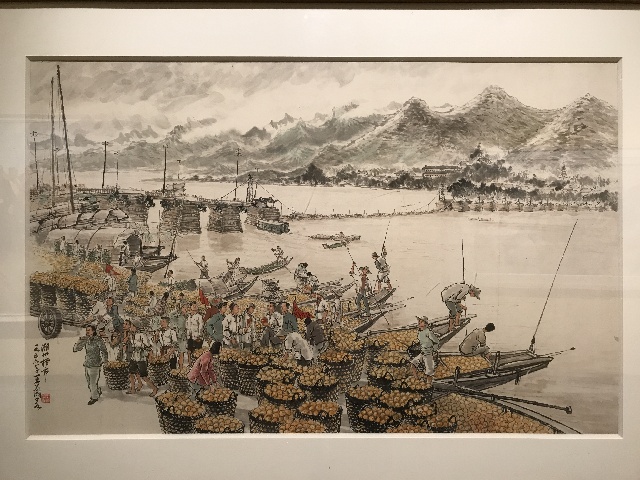Entry is free.
Time: Until Sept. 24
Venue: Guan Shanyue Art Museum, 6026 Hongli Road, Futian District (福田区红荔路6026号关山月美术馆)
Metro: Line 3 or 4 Children's Palace Station (少年宫站) Exit B
Open: 9 a.m.-5 p.m., closed Mondays
“Xi Zhongxun in Nanliang” created by Chen Yan in 2011.
After receiving rave reviews from art critics and full-house attendance in Beijing and Guangzhou, the groundbreaking exhibition reviewing fine arts in Guangdong over the past century has finally come to Shenzhen.
"Reform Mission: Guangdong Art Centennial Exhibition, featuring 350 oil paintings, watercolor paintings, illustrations, woodcut prints and sculptures, opened at Guan Shanyue Art Museum on Sept. 13, utilizing all three floors to map out the evolution and influence of fine arts in Guangdong from 1916 to 2016.
"It is the first time for Guangdong to have a comprehensive summary and display of artworks created in the past 100 years," said Xu Qinsong, vice chairman of China Artists Association, chairman of Guangdong Literary Federation and chief curator of the exhibition.
"Guangdong, as a coastal province, has had extensive connections with the outside world since ancient times, and in the late 19th century, it witnessed the social transformation and the rise of modern China. In the past century, Guangdong was the forefront of cultural innovation and economic reform. Through examining the classic artworks at the exhibition, we hope to inspire and motivate later generations of artists," Xu added.
The central hall on the first floor, the biggest space in the museum, has a selection of masterpieces by 21 prominent Cantonese painters, including Li Xiongcai, Gao Jianfu, Guan Shanyue and He Xiangning, to name a few. "These 21 pioneers were selected by the academic board of the exhibition. Some of them were among the earliest Chinese to study art in Japan or Europe and after they returned to China, they became influential art reformers with established achievements and pushed forward Chinese art history," said Xu.
In their landscape ink and watercolor paintings, they recorded the splendor of the rivers and mountains of China. In their bird and flower paintings, they showed elegant style through skilled brush strokes. In their oil paintings, Western-style composition and layers of pigments deliver vivid effects.
Surrounding the central hall are three exhibition rooms where paintings depicting the construction of China from 1949 to the 1970s and paintings created in recent years with various new techniques are on display.
Painting "Xi Zhongxun in Nanliang," created by Chen Yan in 2011, features Xi, then chairman of the first regional Soviet-style government in Northwest China in the early 1930s surrounded by soldiers and villagers celebrating the success of his pioneering policies.
According to Chen, the painting represents his admiration for the historical achievements of the revolutionary generation. Moreover, creating this large-scale painting was an important artistic step for him, and it was inspired by Western grand-occasion-themed paintings.
On the second floor of the museum are three halls of pre-20th century oil paintings, revolution-themed woodcut prints and Lingnan School paintings. Many Cantonese artists who went abroad absorbed Western or Japanese techniques while retaining traditional Chinese painting approaches. Among the Chinese artists who studied abroad from the late 19th to the early 20th century, Li Tiefu was the first returning student and was regarded as the "Father of Chinese Oil Painting."
Gao Jianfu, another notable artist of the time and founder of the renowned Lingnan Painting School, innovatively combined Chinese ink or watercolor painting with techniques from impressionism, emphasizing the use of negative space and bright colors, starkly contrasting with less colorful ink wash painting.
Also during the wartime, writer Lu Xun saw the potential of the low-cost, easy-to-make woodcut printing as an artistic tool for spreading enlightenment ideologies. He advocated the New Chinese Woodcut Movement, changing China by disseminating revolutionary messages to the masses.
Among the 30-plus woodcut print artists who collaborated with Lu, 20 were from Guangdong and created prints in Shanghai and Hangzhou. In 1934, Li Hua established the Modern Prints Society in Guangzhou, which made Guangdong another woodcut movement center in China.
On the third floor, contemporary paintings created in recent years are exhibited. From landscape paintings to illustrations, the items express modernity and individuality.
The exhibition was first held at the National Art Museum of China in Beijing in July, attracting more than 30,000 visitors, and then it moved to Guangdong Museum of Art in Guangzhou last month, attracting 110,000 visitors.
At the Shenzhen exhibition, visitors can scan the QR codes beside each exhibited item to get more information about the work and its artist. Some items have augmented reality (AR) scanning for visitors to interact with art.
